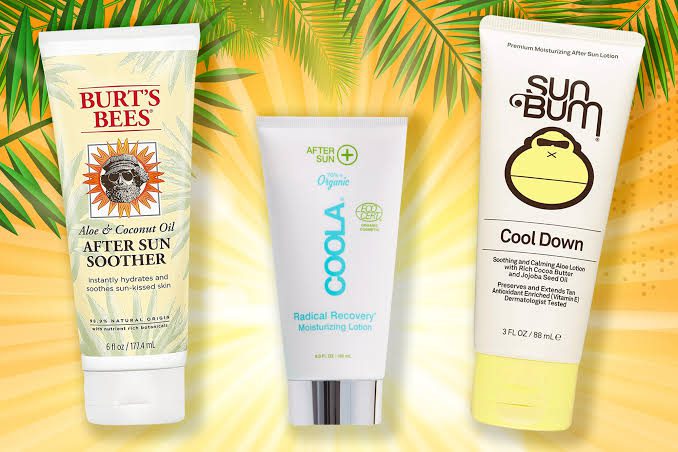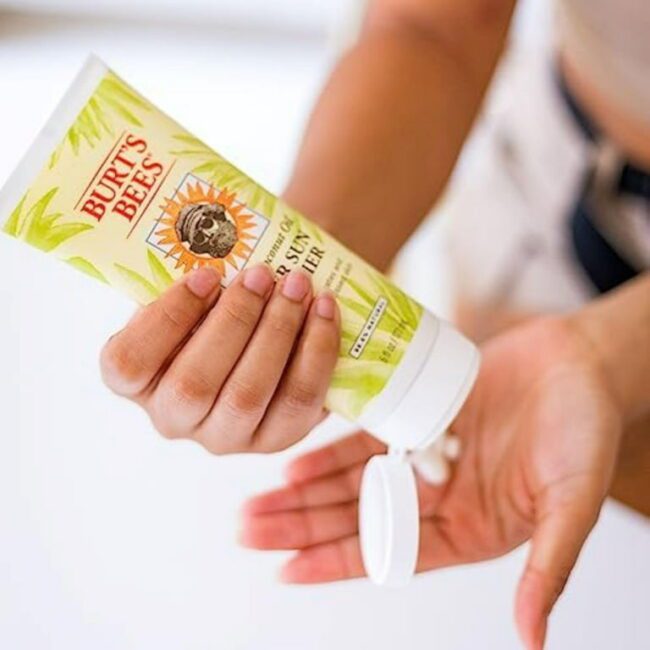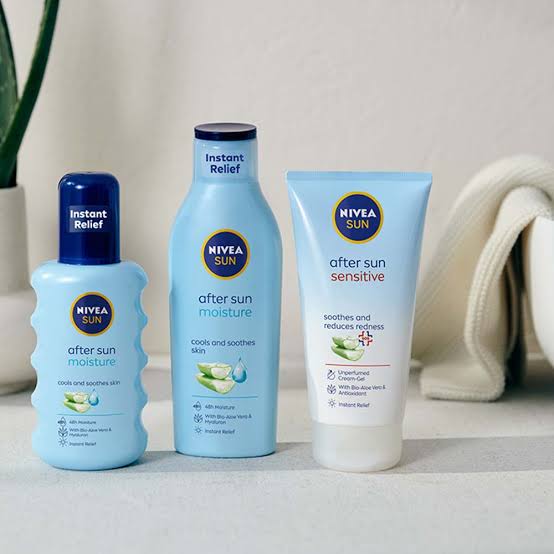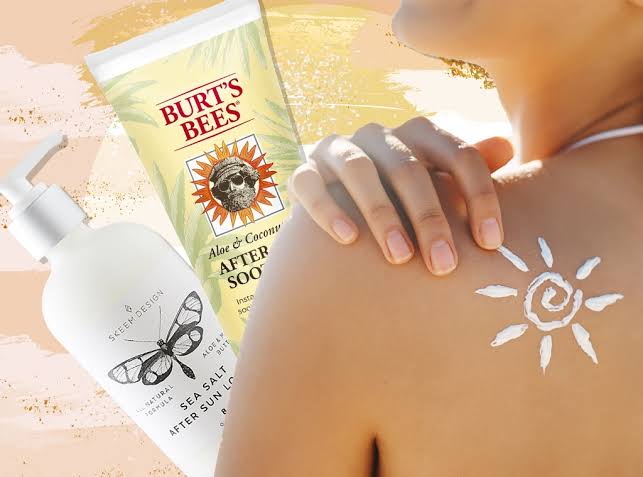Aftersun products are specifically formulated to soothe, hydrate, and repair the skin after exposure to the sun’s harmful ultraviolet (UV) rays. Prolonged sun exposure often leaves the skin dry, irritated, or inflamed, and without proper care, it can lead to long-term damage such as premature aging and hyperpigmentation.
These products are essential for restoring the skin’s natural balance, alleviating discomfort, and preventing further complications. They are particularly beneficial during summer or in areas with intense sunlight, such as Arizona, where the climate often necessitates additional skin protection and aftercare.
The primary purpose of aftersun products is to counteract the adverse effects of sun exposure. While sunscreens are crucial for shielding the skin from UV damage, they do not address the skin’s needs after the damage occurs.
Aftersun treatments fill this gap by including ingredients that promote healing and deep moisturization. Unlike regular moisturizers, aftersun formulations contain targeted components designed to repair sunburned or dehydrated skin, ensuring immediate relief and long-term recovery.
Aloe vera is one of the most effective ingredients in aftersun products, celebrated for its soothing and hydrating properties. Extracted from the aloe plant, it provides a cooling effect, alleviating redness and irritation while promoting tissue repair.
Its ability to penetrate the skin ensures that moisture is restored effectively, leaving it refreshed and rejuvenated. Another crucial component is hyaluronic acid, a powerful humectant that attracts and retains water in the skin.
Sun exposure depletes the skin’s natural moisture, and hyaluronic acid helps counteract this by keeping the skin plump and hydrated, reducing dryness and flakiness. Antioxidants such as vitamin E, vitamin C, and green tea extract are essential in combating the free radicals generated by UV exposure.
These harmful molecules accelerate skin aging and damage cells, but antioxidants neutralize their effects, promoting the regeneration of healthy cells and reducing the risk of long-term damage.
Chamomile extract is another beneficial ingredient, offering anti-inflammatory properties that soothe sensitive or irritated skin. This makes it especially suitable for individuals prone to sunburn or skin sensitivity.
Natural oils and butters, including shea butter, coconut oil, and jojoba oil, are integral to restoring lost moisture and nourishing sun-exposed skin. These ingredients help rebuild the skin’s protective barrier, preventing further dehydration and ensuring a soft, smooth texture.
When combined with other soothing agents, they create a comprehensive formula that addresses the skin’s post-sun needs. The interplay of these ingredients ensures not only immediate relief but also long-term benefits for maintaining healthy skin.
Aftersun products differ from standard moisturizers because of their specific focus on sun-damaged skin. The effectiveness of these formulations lies in their ability to combine multiple active ingredients that work synergistically.
For instance, the cooling properties of aloe vera complement the hydrating effects of hyaluronic acid, while the inclusion of antioxidants ensures protection against further damage. Chamomile and natural oils further enhance these benefits, creating a well-rounded product that provides care at every level.
Climate plays a significant role in choosing the right aftersun product. In areas like Arizona, where the time spent under intense sunlight is common, robust formulations with strong hydrating and reparative properties are essential.
The dry desert air exacerbates skin dehydration, making ingredients like hyaluronic acid and nourishing oils indispensable. Products with cooling agents, such as menthol, provide additional relief in hot climates, helping to calm and refresh the skin.
In more humid regions, lighter gel-based formulations infused with aloe vera and cucumber extract are ideal. These non-greasy options allow the skin to breathe while delivering essential nutrients, making them suitable for daily use.
For optimal results, it is essential to use aftersun products correctly. Begin by cleansing the skin to remove sunscreen, sweat, and other residues. Applying the product generously to affected areas ensures that the active ingredients penetrate deeply and work effectively.
Massaging the product into the skin can enhance absorption and provide a soothing experience, particularly in areas with dryness or irritation. Consistent use after each sun exposure session helps maintain hydration and prevents peeling or flaking, ensuring the skin remains smooth and healthy.
The sensory experience of using aftersun products also adds to their appeal. Just as a fragrance like Ariana Grande perfume can evoke feelings of luxury and self-care, the textures and scents of aftersun products can enhance the post-sun skincare routine.
A well-formulated aftersun treatment not only repairs and hydrates but also provides a moment of relaxation and indulgence. This aspect makes these products an essential addition to any skincare regimen, offering both functionality and an elevated sense of well-being.
Read Also: How to Use Adobe Reader for Easy PDF Viewing and Editing
How to Determine Your Skin’s Needs After Sun Exposure

After prolonged sun exposure, the skin undergoes various changes that require careful attention and tailored care. Sun exposure not only leads to visible effects such as redness, dryness, and irritation but also contributes to long-term damage, including premature aging and hyperpigmentation.
Understanding how to assess your skin’s condition post-exposure is essential for providing it with the appropriate care. Below are the key steps to determine your skin’s needs after spending time in the sun:
1. Examine for Signs of Sunburn: Sunburn is one of the most immediate and visible effects of excessive sun exposure. Check for redness, tenderness, or warmth on the skin.
If the affected areas feel hot to the touch or are accompanied by swelling, it indicates that the skin has been significantly damaged by UV rays. Mild sunburn can often be managed with soothing aftersun products, while severe cases may require medical attention.
2. Assess Skin Hydration Levels: Prolonged sun exposure depletes the skin’s natural moisture, leaving it dry, flaky, and tight. To determine whether your skin is dehydrated, gently press on your skin. I
f it feels rough, looks dull, or fails to bounce back quickly, it is likely in need of hydration. Using a moisturizer rich in hydrating ingredients, such as hyaluronic acid or glycerin, can help replenish lost moisture.
3. Look for Signs of Inflammation: Inflammation is a common response to UV damage and may manifest as redness, itching, or sensitivity. Observe any discomfort or irritation on the skin, particularly in areas that were exposed for extended periods. Ingredients such as aloe vera, chamomile, or calendula can provide relief and reduce inflammation.
4. Inspect for Uneven Skin Tone: UV exposure can lead to the development of dark spots or an uneven complexion due to increased melanin production. Examine your skin for signs of pigmentation or discoloration. Products containing vitamin C or niacinamide can help brighten the skin and address uneven tone over time.
5. Check for Peeling or Flaking: Peeling is a common sign of skin damage, often following sunburn. It indicates that the outer layer of the skin has been harmed and is shedding to make way for new cells.
Avoid picking at peeling skin, as this can cause further damage. Instead, opt for gentle exfoliation to remove dead skin cells and follow with a nourishing moisturizer to restore the skin’s barrier.
6. Evaluate Skin Sensitivity: Sun-damaged skin often becomes more sensitive than usual. If your skin reacts to touch or feels uncomfortable when using your regular products, it is a sign that the skin barrier may have been compromised. Switch to gentle, fragrance-free formulations that are designed for sensitive skin to avoid further irritation.
7. Observe for Long-Term Damage: While some effects of sun exposure are immediate, others may not appear until later. Look for early signs of aging, such as fine lines, wrinkles, or loss of elasticity. Incorporating antioxidants like vitamin E or green tea extract into your skincare routine can help combat free radicals and support the skin’s recovery process.
8. Monitor for Heat Rash or Breakouts: Heat rash and acne can occur after sweating under the sun, especially if sunscreen or sweat clogs the pores. Check for small, red bumps or blemishes that may develop in areas prone to sweating. A lightweight, non-comedogenic moisturizer can help calm the skin without clogging pores.
9. Test for Skin Elasticity: Loss of elasticity is another sign of dehydration or damage. Gently pinch a small area of skin on your hand or face and release it. If the skin does not snap back quickly, it indicates a lack of hydration or collagen support. Using products that contain peptides or ceramides can help restore elasticity and strengthen the skin barrier.
10. Identify Your Skin Type Post-Exposure: Sun exposure can temporarily alter your skin type. For example, oily skin may feel less greasy due to dehydration, while dry skin may become even more parched. Take note of any changes in your skin’s behavior and adjust your post-sun skincare routine accordingly.
Tailoring Your Skincare Routine After Sun Exposure
Once you have identified your skin’s needs, it is essential to follow a tailored routine to promote healing and maintain overall health:
a. Cleanse Gently: Use a mild, sulfate-free cleanser to remove sweat, sunscreen, and impurities without stripping the skin of its natural oils.
b. Hydrate Deeply: Apply a hydrating serum or moisturizer immediately after cleansing to lock in moisture and restore the skin’s natural barrier.
c. Soothe Irritation: Look for products with calming ingredients like aloe vera, cucumber extract, or chamomile to alleviate redness and discomfort.
d. Protect with Antioxidants: Incorporate serums containing vitamin C or E to neutralize free radicals and support the skin’s repair process.
e. Avoid Harsh Products: Refrain from using exfoliants, retinoids, or other potent treatments until your skin has fully recovered from sun exposure.
Prevention Is Key
While addressing the skin’s post-sun needs is important, prevention remains the best strategy. Always apply a broad-spectrum sunscreen with an SPF of at least 30 before heading outdoors and reapply it every two hours. Wear protective clothing, hats, and sunglasses to minimize direct sun exposure, particularly during peak hours.
Read Also: How to Succeed in Affiliate Marketing: Tips and Strategies
Top Aftersun Products and Application Tips for Maximum Effectiveness

Aftersun care is an essential step in maintaining skin health following exposure to the sun’s ultraviolet rays. Aftersun products are specifically designed to soothe, hydrate, and repair the skin, addressing common concerns such as dryness, irritation, and sunburn.
Selecting the right aftersun products and applying them effectively can make a significant difference in your skin’s recovery process. Below, we explore some of the best aftersun products available and offer tips for achieving maximum benefits.
1. Aloe Vera Gel
Aloe vera gel is one of the most popular aftersun products due to its natural cooling and soothing properties. It is ideal for reducing redness, calming inflammation, and providing relief from mild sunburn. When choosing an aloe vera gel, opt for a pure formula free of artificial colors or fragrances to avoid irritating sensitive skin.
Application Tip
Apply a generous layer of aloe vera gel to the affected areas immediately after cleansing your skin. Allow it to absorb fully without rubbing it in, as this ensures maximum hydration and cooling.
2. Moisturizing Aftersun Lotions
Aftersun lotions are specifically formulated to restore moisture and repair damage caused by sun exposure. These lotions often include hydrating ingredients such as glycerin, hyaluronic acid, and shea butter, as well as soothing agents like chamomile or cucumber extract.
Application Tip
Apply the lotion evenly to your entire body after showering to lock in moisture. Focus on areas that feel tight, dry, or tender, and reapply as needed throughout the day.
3. Aftersun Sprays
For those seeking convenience and quick relief, aftersun sprays are an excellent option. These sprays are lightweight, easy to apply, and perfect for hard-to-reach areas such as the back. Many aftersun sprays also contain antioxidants like vitamin E to combat free radical damage.
Application Tip
Shake the bottle well before use and spray evenly across the skin. Hold the bottle at least six inches away to ensure an even application. Avoid spraying directly onto the face; instead, spray onto your hands and gently pat onto facial skin.
4. Cooling Aftersun Masks
Aftersun masks, particularly sheet masks or gel masks, provide targeted hydration and repair for the face. They are infused with ingredients such as green tea extract, collagen, or niacinamide to help restore the skin’s natural balance and reduce signs of fatigue caused by UV exposure.
Application Tip
Place the mask on clean, dry skin and leave it on for 15–20 minutes. Use any leftover serum to massage into your neck and décolletage for added hydration.
5. Aftersun Balms and Creams for Sunburn Relief
If you experience significant sunburn, aftersun balms and creams are essential for providing intense hydration and relief. These products often include calendula or panthenol to promote skin healing and reduce peeling.
Application Tip
Apply a thick layer of balm or cream to sunburned areas before bedtime to allow the skin to repair overnight. Avoid rubbing the product in too vigorously, as this may aggravate the affected areas.
Tips for Applying Aftersun Products
Effectively using aftersun products involves more than simply applying them to the skin. Proper application techniques maximize their benefits and promote faster recovery. Follow these tips for optimal results:
a. Cleanse the Skin Gently: Before applying any aftersun product, cleanse your skin with a mild, sulfate-free cleanser to remove sunscreen, sweat, and impurities. Avoid using hot water or harsh soaps, as these can strip the skin of its natural oils.
b. Cool the Skin First: If your skin feels hot or irritated, cool it down with a cold compress or a brief rinse with cool water. This helps reduce inflammation and prepares the skin for the aftersun product.
c. Apply on Damp Skin: Applying aftersun products to slightly damp skin enhances their absorption and locks in moisture. Use a clean towel to gently pat your skin dry after cleansing, leaving it slightly moist.
d. Use Generous Amounts: Do not skimp on aftersun products, especially in areas where the skin feels tight, dry, or burned. A generous application ensures that the skin receives adequate hydration and soothing relief.
e. Reapply as Needed: Depending on the severity of sun exposure, you may need to reapply your chosen aftersun product several times throughout the day. Pay attention to your skin’s needs and adjust accordingly.
Why Aftersun Care Is Crucial
Aftersun care goes beyond providing immediate relief; it plays a vital role in preventing long-term damage caused by UV exposure. Prolonged exposure to the sun can disrupt the skin’s natural barrier, leading to dehydration, premature aging, and an increased risk of hyperpigmentation.
Aftersun products help counteract these effects by replenishing moisture, soothing irritation, and promoting the skin’s natural repair processes.
Moreover, consistent use of aftersun products can enhance the skin’s resilience over time, making it better equipped to handle future sun exposure. By incorporating aftersun care into your routine, you not only address the immediate effects of UV damage but also support your skin’s overall health and appearance.
Frequently Asked Questions on How to Choose the Best Aftersun Products for Optimal Skin Care

1. What are the key ingredients to look for in aftersun products?
Aftersun products should contain ingredients that soothe, hydrate, and repair the skin. Look for natural soothing agents like aloe vera, chamomile, or calendula to calm irritation. Hydrating ingredients such as hyaluronic acid, glycerin, and shea butter are essential for replenishing lost moisture.
Antioxidants like vitamin E and green tea extract help combat free radical damage caused by UV exposure, while panthenol and allantoin promote healing and reduce redness.
2. Are there different types of aftersun products for specific skin concerns?
Yes, aftersun products cater to various skin concerns. For mild irritation, a cooling gel is effective. Hydrating lotions are ideal for dry or tight skin, while creams and balms provide intense relief for severe sunburn.
Aftersun sprays are perfect for quick, easy application and covering large areas, while sheet masks or gel masks target the face. Choosing a product tailored to your specific concern ensures optimal results.
3. Should I consider my skin type when selecting an aftersun product?
Absolutely. Your skin type plays a crucial role in determining the best aftersun product. For sensitive skin, choose fragrance-free and hypoallergenic formulations.
Oily or acne-prone skin benefits from lightweight, non-comedogenic gels or sprays, while dry skin may require richer lotions or creams with nourishing oils. For combination skin, select a balanced product that hydrates without feeling heavy.
4. Can I use a regular moisturizer instead of an aftersun product?
While regular moisturizers provide hydration, they are not specifically formulated to address the unique needs of sun-exposed skin.
Aftersun products contain targeted ingredients to soothe, repair, and protect the skin from UV damage. Using a dedicated aftersun product ensures that you address the specific effects of sun exposure, such as inflammation, redness, and dehydration.
5. Are aftersun products suitable for children?
Yes, but it is important to choose aftersun products formulated for sensitive skin or those labeled as safe for children. Avoid products with alcohol, artificial fragrances, or strong chemicals, as these can irritate young or delicate skin. Natural options with aloe vera or chamomile are often the safest choices for children.
6. How soon should I apply aftersun products after sun exposure?
It is best to apply aftersun products immediately after sun exposure, ideally after cleansing the skin. This helps to cool and hydrate the skin while minimizing damage. Prompt application ensures that the soothing and repairing ingredients have the maximum effect on restoring your skin’s natural balance.
7. Do aftersun products help prevent peeling?
Yes, high-quality aftersun products can help prevent peeling by hydrating and nourishing the skin, reducing the severity of sunburn. Ingredients like shea butter, hyaluronic acid, and glycerin provide deep hydration, while soothing agents such as aloe vera promote healing. Regular use of aftersun products ensures that the skin remains moisturized and less likely to peel.
8. Can I use aftersun products on other parts of my body besides the face?
Aftersun products are versatile and can be used on any area of the body exposed to the sun. Whether it’s your arms, legs, back, or chest, applying an aftersun product helps repair the skin and restore hydration. For delicate areas like the face, consider using a product specifically formulated for facial skin to avoid clogging pores.
9. Are natural or organic aftersun products better than synthetic ones?
Natural or organic aftersun products are often gentler on the skin and contain fewer synthetic additives, making them ideal for sensitive skin. However, synthetic formulations may include advanced ingredients that deliver targeted benefits. The best choice depends on your personal preferences and skin needs, but both types can be effective if they contain high-quality ingredients.
10. How can I enhance the effectiveness of aftersun products?
To maximize the benefits of your aftersun product, start by cleansing your skin with a mild cleanser to remove sunscreen, sweat, and impurities. Apply the product to slightly damp skin to enhance absorption. Store certain products, such as gels and sprays, in the refrigerator for an added cooling effect. Reapply as needed, especially if your skin feels tight or dry.
In conclusion, choosing the best aftersun product involves understanding your skin’s unique needs and selecting formulations with the right ingredients. By addressing your concerns and applying products effectively, you can ensure your skin remains healthy, hydrated, and rejuvenated after sun exposure.
Read Also: 4 Amazing Foods and Drinks That Can Help You Quit Smoking
Do you have any questions, suggestions, or contributions? If so, please feel free to use the comment box below to share your thoughts. We also encourage you to kindly share this information with others who might benefit from it. Since we can’t reach everyone at once, we truly appreciate your help in spreading the word. Thank you so much for your support and for sharing!






